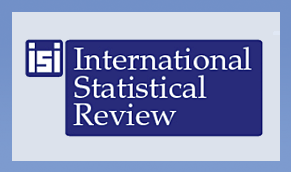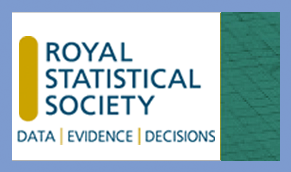Welcome to Australian Rain Technologies
Enabling confident commercial decision-making around rainfall enhancement
(For clarity, we do not make any claim to making rain fall on non-rainy days)
Leading journals publish ART’s breakthrough statistical approach
Scientific papers addressing ART’s breakthrough statistical methodology to precisely measure rainfall enhancement have been published in two leading statistical science journals.
Weighting, Informativeness and Causal Inference, with an Application to Rainfall Enhancement has been published in the Journal of the Royal Statistical Society 2022.
Read the Report
Nudging a Pseudo-Science Towards a Science. The Role of Statistics in a Rainfall Enhancement Trial in Oman - appears in the International Statistical Review 2022.
Read the Report
I recall 10 years ago voicing my frustration to a seasoned scientist in the rainfall enhancement field about the lack of acceptance of our unprecedentedly precise and useable trial results.
“You’ve got to get into the journals, and I mean the top journals,” he told me.
Some years later, we have.
Matt Handbury – Executive Chairman
See more on ART’s statistical methodology https://www.australianrain.com.au/statistics and on our trial reports Adelaide 2008-10 and Oman 2013-2018 in the resources section of this site https://www.australianrain.com.au/resources.
More rainfall, more carbon sequestriation
Now we have a precise means of measuring rainfall enhancement one can consider the economics of applying rainfall enhancement to increasing forest growth and consequentially the carbon dioxide extracted from the atmosphere as part of that growth process.
We estimate that given enhancement of 10 per cent an additional 30 million tonnes of CO2 could be extracted by an application covering the greater proportion of Australia’s forests. This would represent five per cent of Australia’s net annual emissions. The cost would be below $10 tonne.
Six years of precise results in Oman
The publication of articles on ART’s unique statistical methodology gives further weight to the remarkable results from our six-year trial in the Hajar Mountains of Oman.
The six years showed highly consistent enhancement (16.3 per cent to 20.8 per cent), and very high probabilities around estimates. The probability that enhancement was due to chance fell to zero after the second year.
There was a 99.5 per cent probability that enhancement was more than 10 per cent.
Estimated enhancements and associated confidence levels with increasing numbers of trials.
Benefits from applying ART’s statistical approach to situations of water shortage -
Australian Rain Technologies (ART) is pioneering statistical analysis to enable commercially effective decision-making in the area of rainfall enhancement. This statistical methodology is being applied to ART’s own ATLANT™ rainfall enhancement through ionisation technology. However it is equally applicable to chemical cloud-seeding, which has been hampered
by inconclusive trial analysis for 70 years.
In particular the University of Wollongong has applied this analytical method across multiple trials of ART’s ATLANT™ ’ rainfall enhancement through ionisation technology over 10 years in Australia and Oman. (See summary in section on Statistical Methodology and full description of methodology in trial reports in Resources).
In all cases rainfall enhancement was identified at high levels of statistical confidence. Enhancement ranged from 10 per cent (90 per cent statistical confidence level) in three trials in South Australia to 16.3 per cent enhancement with 99.99 per cent statistical confidence level) in six trials in Oman. This is the sixth consecutive year that has returned an estimated enhancement effect of 15 per cent or more, with statistical probabilities greater than 99 per cent in Oman.
These figures are perhaps more usefully presented as that there was a
99.5 per cent probability that enhancement was more than 10 per cent in Oman 2013-2016.
Such results, if repeated in multiple locations throughout the world, would represent a major complement to current expensive and in some ways unpalatable water supply augmentation methodologies.
They allow the precise estimation of costs per additional ML or GL and of
the additional uield in the case of agricultural or carbon sequestriation applications.
They could add to water supplies at below 10 cents KL, $100 ML or
$100,000 GL.
We have spent 10 years putting together a world-leading spatial statistical and econometric evaluation team as we pursued our path to rigorous demonstration of efficacy. We have learnt from 70 years of frustrating
and often contradictory traditional weather modification trials since World War II.
We hope this website leads you to share our keen appetite for providing applicable results from rainfall enhancement trials. And for investigating ATLANT™’s potential in all areas of water shortage around the world.
Watch the 8 minute film “Omani Trials with Technology Overview”
Nudging a Pseudo-Science Towards a Science. The Role of Statistics in a Rainfall Enhancement Trial in Oman - appears in the International Statistical Review 2022.
Weighting, Informativeness and Causal Inference, with an Application to Rainfall Enhancement has been published in the Journal of the Royal Statistical Society 2022.
Fact sheet:
Australian Rain Technologies and the ATLANT technology
Accelerating droplet collision - The ATLANT technology introduces ionized aerosols into clouds, accelerating the collision of cloud droplets and the formation of rainfall sized droplets.
Harmless to humans - Ionisation is entirely harmless to humans and vegetation. Its sole impact on the atmosphere is to enhance rainfall. If severe weather is forecast the ATLANTTM units can be turned off to avoid any worsening of such conditions.
Pioneering statistical methodology - In conjunction with the National Institute of Applied Statistical Research at University of Wollongong ART has developed a pioneering statistical methodology to determine the level of rainfall enhancement. This is a world first and follows 70 years of indeterminate statistical analysis of chemical cloud seeding trials. The methodology and results have been published in peer-reviewed journals.
Three years in Adelaide - Three years of trials in Adelaide showed 10 per cent enhancement with a statistical probability of enhancement of 90 per cent.
Six years in Oman - of six years of ionization trials in Oman has shown enhancement of 18 per cent with a statistical probability of enhancement of 99.9 per cent.
15-30 GL over 2000 sq km - Each unit covers more than 2,000 sq km and produces an additional 15-30 GL of usable water (dependent on measured local enhancement and underlying annual rainfall).
$40-$60 ML - This works out at $40,000-$60,000 GL ($40-60 ML), a very small fraction of other water options. A 50-unit Atlant application would deliver 1000GL at a cost of $37.5mn,
More water pastures and forests - rainfall falls on pasture and forests before increasing soil water content and running off into rivers and dams. This proportionately increases pasture and tree growth.
Increased CO2 uptake at $5-10 tonne - will also be a proportionate increase in carbon uptake by such vegetation. A 50-unit installation in eastern Victoria might sequester an additional 6.4 million tons at a cost of $6 a ton. Expanded nationally, such installations could contribute a significant portion of Australia’s targeted reduction in CO2 emissions
Continuous operation, minimum power requirement - The Atlant Technology runs continuously (outside extreme weather events), consuming no more power than a television set.
Flexible operations by remote control.
Low-cost installation and easily relocated. Virtually zero-cost operation.




